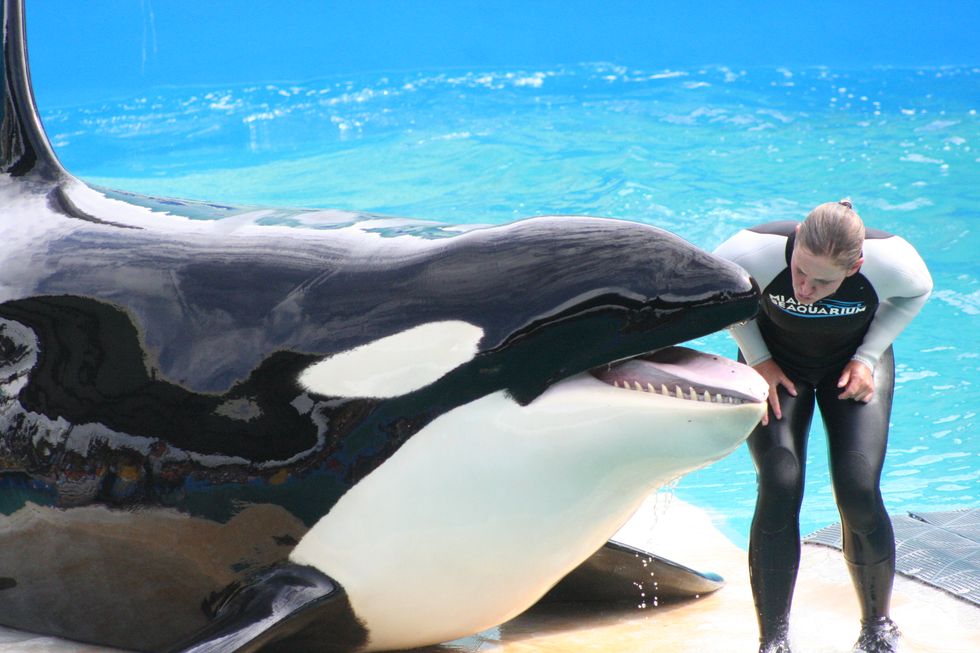February 21, 1991: Keltie Byrne, a trainer at Sealand, falls into a performance pool containing three 12,000-pound orca whales. The three whales tossed the trainer around, keeping her from the surface and ultimately drowning her. The trainers at Sealand tried for two hours to recover her body, but the orcas refused to give it up.
Byrne was the first of three people killed by Tilikum, and the first known death caused by a killer whale. Later, SeaWorld bought Tilikum from SeaLand for breeding purposes despite knowing his history of killing and aggression. However, the whales cannot be blamed for these attacks because they stuffer from extreme animal abuse through cramped enclosures, poor diets, inadequate social interaction and little mental stimulation.
Captive whales struggle to retain mental and physical health in cramped enclosures. Orcas in the wild have hundreds of miles of ocean to swim in, and, if need be, they can escape from other aggressive orcas. Their tanks, essentially the equivalent of a bathtub, prove extremely inefficient at containing three orcas. With the tiny enclosures forcing them into close quarters, the orcas become stressed and aggressive, lashing out both at each other, and at their trainers.
Not only do orcas in captivity suffer from tiny enclosures, but SeaWorld also feeds their whales extremely poor diets. Orcas also get exercise and mental stimulation from hunting. In captivity, trainers feed the orcas dead, frozen herring. The whales do not have opportunities to hunt or even allowed to participate in games that mimic hunting. SeaWorld also feeds their orcas animal byproducts such as gelatin. Gelatin, obtained by boiling animal bones, skin, and tendons, cannot satisfy a killer whale’s dietary needs. When orcas have no access to an appropriate diet, orcas can become aggressive simply due to hunger.
“When you look into their eyes, you know someone is home” stated former SeaWorld employee John Jett. No matter how SeaWorld and other sea parks try to sugarcoat it, keeping whales in captivity is animal abuse. Children should not be taught to romanticize captivity. Children should not grow up in a society that encourages keeping highly intelligent beings kept in tiny concrete pools. Future generations should experience such majestic creatures in their wild habitats, where they truly belong. Then the future generations can truly appreciate orcas’ power and intelligence, and how they deserve a life beyond cheap shows. SeaWorld is a billion-dollar company that makes its money through the exploitation of animals. They only offer to make changes to their whale’s captive environments after they receive criticism for something Future generations in particular have spoken out, and the world has begun to understand that animals are not here solely for our amusement. We share the world with such stunning, intelligent creatures and they deserve to be treated with respect and compassion. We are not their masters and they are not our slaves. As Henry David Thoreau said, “All good things are wild and free,” and orcas should be just that: wild and free from captivity.




 Energetic dance performance under the spotlight.
Energetic dance performance under the spotlight. Taylor Swift in a purple coat, captivating the crowd on stage.
Taylor Swift in a purple coat, captivating the crowd on stage. Taylor Swift shines on stage in a sparkling outfit and boots.
Taylor Swift shines on stage in a sparkling outfit and boots. Taylor Swift and Phoebe Bridgers sharing a joyful duet on stage.
Taylor Swift and Phoebe Bridgers sharing a joyful duet on stage.













